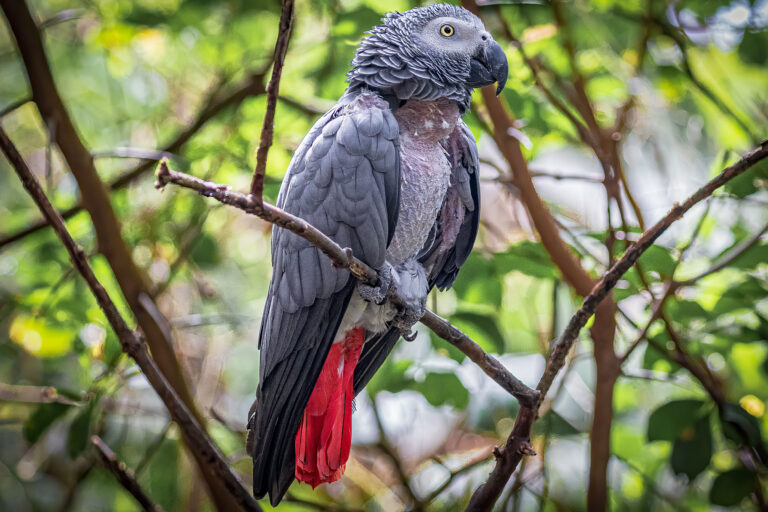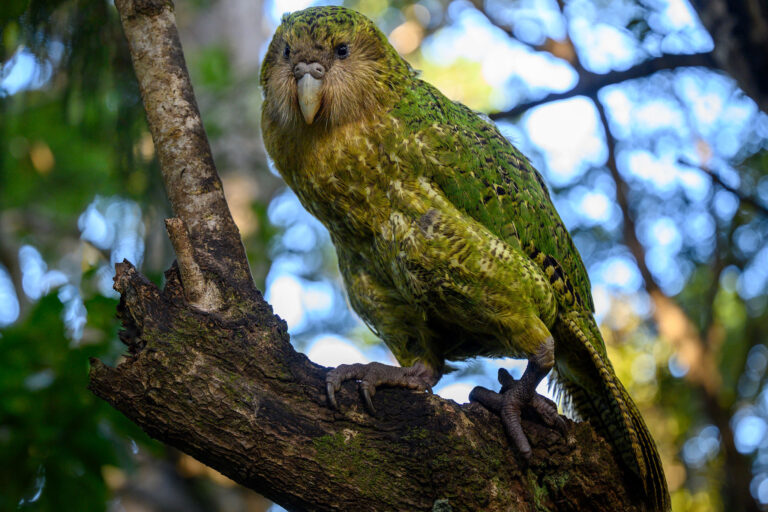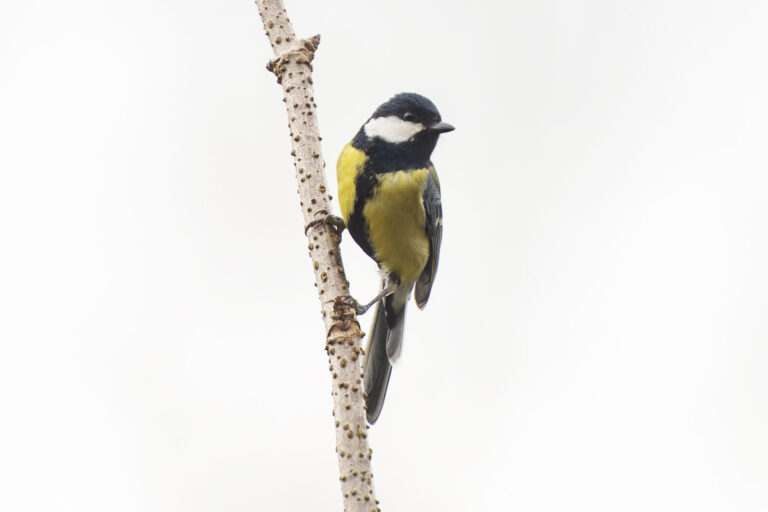In the symphony of nature, birdsong holds a special place, with each species adding its unique melody to the chorus of the wild. Among these feathered musicians, some stand out not just for their tunes but for the sheer volume of their calls. From the depths of dense forests to the vastness of open skies, these avian vocalists command attention with their powerful vocalizations. In this article, we’ll embark on an auditory journey to explore the top 7 loudest birds, ranked by decibel level. Join us as we uncover the champions of the avian world and delve into the science behind their impressive vocal prowess.
1. Kakapo (Strigops habroptilus):
Topping our list of the loudest birds is the kakapo, an enigmatic parrot native to New Zealand. Despite being flightless, the kakapo makes up for its lack of aerial prowess with a booming call that can reach up to 132 decibels. Found primarily in dense forests, these nocturnal birds use their powerful calls to communicate over long distances and attract mates. Sadly, the kakapo is critically endangered, with only a few hundred individuals remaining, highlighting the importance of conservation efforts to protect this unique species.
2. Common Loon (Gavia immer):
Known for its haunting calls that echo across northern lakes and rivers, the common loon ranks high on the list of loudest birds. With vocalizations reaching up to 120 decibels, these iconic waterfowl are renowned for their eerie wails and tremolo calls. During the breeding season, loons use their vocalizations to establish territories and communicate with their mates and offspring. Despite facing threats from habitat loss and pollution, common loons continue to enchant observers with their haunting calls and graceful demeanor.
3. African Fish Eagle (Haliaeetus vocifer):
As the iconic symbol of African waterways, the African fish eagle is not only a majestic sight but also one of the loudest birds in the avian kingdom. With its distinctive cry that can be heard from miles away, the African fish eagle boasts vocalizations reaching up to 117 decibels. These impressive raptors use their calls to establish territories and communicate with their mates while soaring high above the savannas and wetlands of Africa. As apex predators, African fish eagles play a crucial role in maintaining the balance of their ecosystems, making their conservation vital for the health of African waterways.
4. American Bittern (Botaurus lentiginosus):
Despite its secretive nature, the American bittern earns its place among the loudest birds with its distinctive “pump-er-lunk” call, which can reach volumes of up to 112 decibels. Found in marshes and wetlands throughout North America, these elusive herons use their vocalizations to establish territories and attract mates during the breeding season. While their cryptic plumage provides excellent camouflage among the reeds, their booming calls betray their presence to attentive listeners.
5. Channel-billed Cuckoo (Scythrops novaehollandiae):
Native to Australia and New Guinea, the channel-billed cuckoo is renowned for its loud and distinctive calls, which can reach volumes of up to 100 decibels. These large cuckoos use their vocalizations to establish territories and communicate with their mates during the breeding season. Despite their impressive vocal prowess, channel-billed cuckoos are often heard rather than seen, making them a challenging species for birdwatchers to spot in the dense foliage of their tropical habitats.
6. Superb Lyrebird (Menura novaehollandiae):
Found in the dense forests of southeastern Australia, the superb lyrebird is famous for its remarkable vocal abilities, which include mimicking a wide range of sounds, including chainsaws and camera shutters. While not as loud as some other species on our list, the superb lyrebird still earns its place among the loudest birds with vocalizations reaching up to 96 decibels. During the breeding season, male lyrebirds use their elaborate songs to attract mates and establish territories, showcasing their vocal prowess to potential rivals.
7. European Robin (Erithacus rubecula):
Rounding out our list is the European robin, a familiar sight and sound in gardens and woodlands throughout Europe. While not as loud as some of the other species on our list, the European robin still packs a punch with its melodious song, which can reach volumes of up to 94 decibels. These iconic songbirds use their vocalizations to defend territories and attract mates during the breeding season, adding a cheerful soundtrack to the natural world.
In the cacophony of the natural world, the top 7 loudest birds stand out as champions of the avian kingdom, commanding attention with their powerful vocalizations. From the depths of dense forests to the vastness of open skies, these feathered vocalists remind us of the beauty and diversity of the natural world. As stewards of the Earth, it is our responsibility to cherish and protect these magnificent birds, ensuring that future generations can continue to marvel at their impressive vocal prowess. So let us listen, learn, and celebrate the rich tapestry of birdlife that surrounds us, for it is a symphony worth preserving for generations to come.

Dr. David Woolard’s interest in veterinary medicine stems from his upbringing in the lovely hamlet of New Paltz, NY, where he gained a love of animals at a young age.
Subscribe my Newsletter for new blog posts. Stay updated from your inbox!










